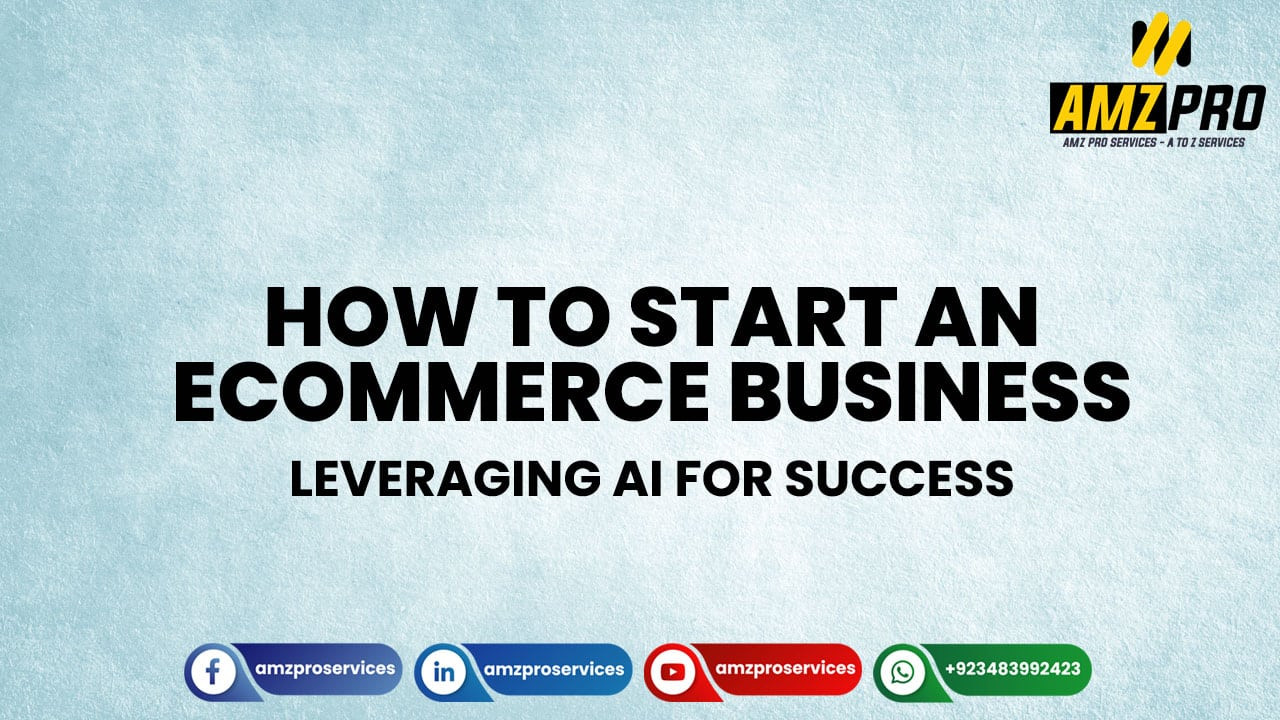How to Start an Ecommerce Business: Leveraging AI for Success
In today's digital era, starting an e-commerce business offers immense opportunities for growth and success. With the advancement of technology, particularly Artificial Intelligence (AI), you can take your e-commerce venture to the next level. In this blog, we will guide you through the step-by-step process of starting an e-commerce business and explore how you can integrate AI technology to drive efficiency, enhance customer experiences, and stay ahead of the competition.
Identify Your Niche and Conduct Market Research
The first step in starting an e-commerce business is to identify your niche and conduct thorough market research. Consider the following:
- Identify a Profitable Niche: Choose a niche that aligns with your interests, expertise, and market demand. Look for untapped opportunities or gaps in the market that you can leverage.
- Conduct Market Research: Analyze the competition, target audience, and market trends. Identify customer preferences, pain points, and potential demand for your products or services.
Develop a Business Plan
A solid business plan serves as a roadmap for your e-commerce business. It outlines your goals, strategies, financial projections, and marketing approaches. Include the following elements:
- Company Description: Define your business, its mission, and its unique selling proposition (USP).
- Product and Market Analysis: Provide an in-depth analysis of your target market, competition, and the products or services you will offer.
- Marketing and Sales Strategy: Outline your marketing channels, pricing strategy, customer acquisition plan, and sales projections.
- Financial Projections: Include your budget, projected revenues, expenses, and profitability analysis.
Build Your Online Store
Creating a user-friendly and visually appealing online store is essential for attracting and engaging customers. Consider the following steps:
- Choose an E-commerce Platform: Select a reliable and scalable e-commerce platform that offers features such as customizable templates, secure payment gateways, inventory management, and integration with AI solutions.
- Design and Branding: Create a professional and visually appealing website design that reflects your brand identity. Use high-quality product images and compelling product descriptions.
- User Experience Optimization: Optimize your website for easy navigation, fast loading speed, and mobile responsiveness. Ensure a smooth checkout process to minimize cart abandonment.
Implement AI-Powered Inventory Management
AI technology can revolutionize your inventory management processes, ensuring optimal stock levels, reducing costs, and preventing stockouts. Consider the following AI-powered solutions:
- Demand Forecasting: Utilize AI algorithms to analyze historical sales data, market trends, and external factors to accurately predict future demand. This helps you optimize inventory levels and prevent overstocking or stockouts.
- Automated Reordering: Set up AI-based systems that automatically generate purchase orders or trigger alerts when inventory levels reach predefined thresholds. This streamlines the reordering process and minimizes manual intervention.
- Smart Warehouse Management: Use AI-powered systems to optimize warehouse operations, including picking, packing, and fulfillment. This improves efficiency, reduces errors, and enables faster order processing.
Enhance Customer Support with AI Chatbots
AI chatbots can provide instant and personalized customer support, improving response times and customer satisfaction. Consider the following AI chatbot applications:
24/7 Support: AI chatbots can handle customer inquiries round the clock, providing quick responses to common questions, order status updates, and basic troubleshooting.
Personalization: Train chatbots to analyze customer
data and provide personalized recommendations or product suggestions based on their preferences and purchase history.
- Order Tracking: AI chatbots can provide real-time updates on order status and shipment tracking, reducing customer inquiries and enhancing transparency.
- Problem Resolution: Chatbots can assist customers in troubleshooting common issues or guide them through the returns and refund process. They can escalate complex inquiries to human agents when necessary.
Utilize AI for Personalized Product Recommendations
AI-powered recommendation engines can analyze customer data, browsing behavior, and purchase history to deliver personalized product recommendations. Consider the following strategies:
- Collaborative Filtering: Implement collaborative filtering algorithms that recommend products based on similar customer preferences. This encourages cross-selling and upselling opportunities.
- Behavioral Targeting: Use AI to track and analyze customer behavior, such as click patterns, time spent on product pages, and items added to the cart. Leverage this data to offer tailored recommendations.
- Dynamic Pricing: AI algorithms can analyze market trends, competitor pricing, and customer behavior to optimize product pricing. This enables dynamic pricing strategies to maximize sales and profits.
Leverage AI for Marketing Automation
AI can automate and optimize various marketing activities, saving time and resources while improving effectiveness. Consider the following AI-powered marketing strategies:
- Email Marketing Automation: Use AI to segment your customer base and send targeted email campaigns based on customer preferences, purchase history, and behavior. Personalize subject lines and content to drive engagement.
- Social Media Advertising: AI-powered algorithms can optimize social media ad campaigns by analyzing customer data, demographics, and ad performance. This helps you reach the right audience and maximize ad ROI.
- Content Creation and Optimization: AI tools can generate content, including blog posts, product descriptions, and social media captions. They can also optimize content for SEO, improving search engine rankings and organic visibility.
Continuously Monitor and Optimize
To ensure the success of your e-commerce business, continuous monitoring and optimization are essential. Consider the following strategies:
- Data Analysis: Utilize AI analytics tools to gain insights into customer behavior, sales patterns, and marketing performance. Use this data to identify areas for improvement and make data-driven decisions.
- A/B Testing: Experiment with different strategies, such as website design, pricing models, and marketing campaigns. A/B test variations to identify the most effective approaches and optimize your efforts.
- Customer Feedback Analysis: Gather customer feedback through surveys, reviews, and social listening. Analyze the feedback to understand pain points and areas where customer satisfaction can be improved.
By following these steps and integrating AI technology into your e-commerce business, you can gain a competitive edge, streamline operations, and deliver exceptional customer experiences. Embrace the power of AI to automate tasks, personalize interactions, optimize marketing, and enhance overall business efficiency. Stay proactive, adapt to market trends, and continuously improve to build a successful and future-ready e-commerce venture.


